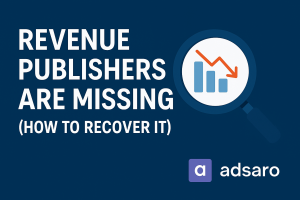Choosing the right advertising tools for your business can be a game-changer in achieving your marketing goals. The right tools can elevate your marketing efforts, improve targeting, and maximize your return on investment. In today’s competitive digital landscape, selecting the right solutions isn’t just an option—it’s a necessity. In this guide, we’ll explore how to identify the best advertising tools to help you reach your goals and achieve long-term success. Here’s a comprehensive guide to help you navigate the process.
1. Define Your Advertising Goals

To achieve your advertising objectives, it’s crucial to first define your goals clearly. Once you know what you’re aiming for—whether it’s increasing brand awareness, generating leads, or driving sales—choosing the right advertising tools becomes much easier. The tools you select should align with these goals, helping you execute your strategy effectively and achieve the best possible results.
2. Understand Your Target Audience

Knowing your target audience is essential when choosing the right advertising tools. To make the most of your marketing efforts, it’s important to consider factors such as demographics, interests, online behavior, and purchasing habits. By understanding who your audience is, you can tailor your approach more effectively. Choosing the right advertising tools that offer precise targeting options—like social media ads, display advertising, or search engine marketing—will help you connect with the right people at the right time. These tools allow for better audience segmentation and increase the likelihood of delivering your message to the most relevant potential customers.
3. Consider Your Budget

Budget plays a significant role when choosing the right advertising tools for your business. It’s important to first determine how much you’re willing to spend on your campaigns. Once you have a clear budget in mind, you can explore tools that fit within those financial parameters. Many advertising tools offer free versions or tiered pricing plans, allowing you to start small and test what works best for your business. As you begin to see results, you can scale up your efforts and invest in more advanced features or additional tools. Choosing the right advertising tools that match both your goals and your budget ensures that you get the most value without overspending.
4. Evaluate Tool Features and Capabilities
When choosing the right advertising tools, evaluate their features to ensure they meet your business needs. Look for key capabilities like advanced targeting, analytics, automation, and integrations with other platforms. Select tools that can scale with your business, allowing for long-term growth and optimization. The right features will streamline your campaigns and boost ROI.
Different tools offer various features and capabilities. Look for tools that provide:
- Analytics and Reporting: Detailed insights into campaign performance.
- Automation: Streamline repetitive tasks and improve efficiency.
- Customization: Ability to tailor ads to your brand and audience.
- Integration: Seamless integration with other marketing platforms you use.
5. Research and Compare Tools
Research multiple tools and compare their features, pricing, and user reviews. Some popular advertising tools include:
- Google Ads: Ideal for search engine marketing and display ads.
- Facebook Ads: Excellent for targeting specific demographics on social media.
- LinkedIn Ads: Perfect for B2B advertising and professional networking.
- AdRoll: Great for retargeting campaigns and cross-platform advertising.
- SEMrush: Useful for keyword research and competitive analysis.
6. Test and Optimize of Choosing the Right Advertising Tools

Testing and optimizing are crucial steps when choosing the right advertising tools. Start by running small-scale campaigns to evaluate how well the tools perform in real-world scenarios. Monitor key metrics, such as engagement and conversions, and refine your approach based on the results. This iterative process helps you identify the most effective tools for your business, ensuring maximum efficiency and ROI over time.
7. Seek Expert Advice

When choosing the right advertising tools, seeking expert advice can provide valuable insights. Professionals in digital marketing can help you navigate the vast array of tools available, recommending solutions based on your goals, budget, and industry. Their expertise ensures you make informed decisions and avoid costly mistakes, setting your campaigns up for success.
8. Stay Updated
The advertising landscape is constantly evolving, with new tools and features emerging regularly. Stay updated with industry news, attend webinars, and participate in online forums to keep your knowledge current and make informed decisions.
Conclusion
Choosing the right advertising tools is a critical step in executing successful marketing campaigns. By defining your goals, understanding your audience, considering your budget, and thoroughly researching your options, you can select the tools that will help you achieve your business objectives. Remember to test, optimize, and stay informed to continuously improve your advertising efforts.








Leave a Reply